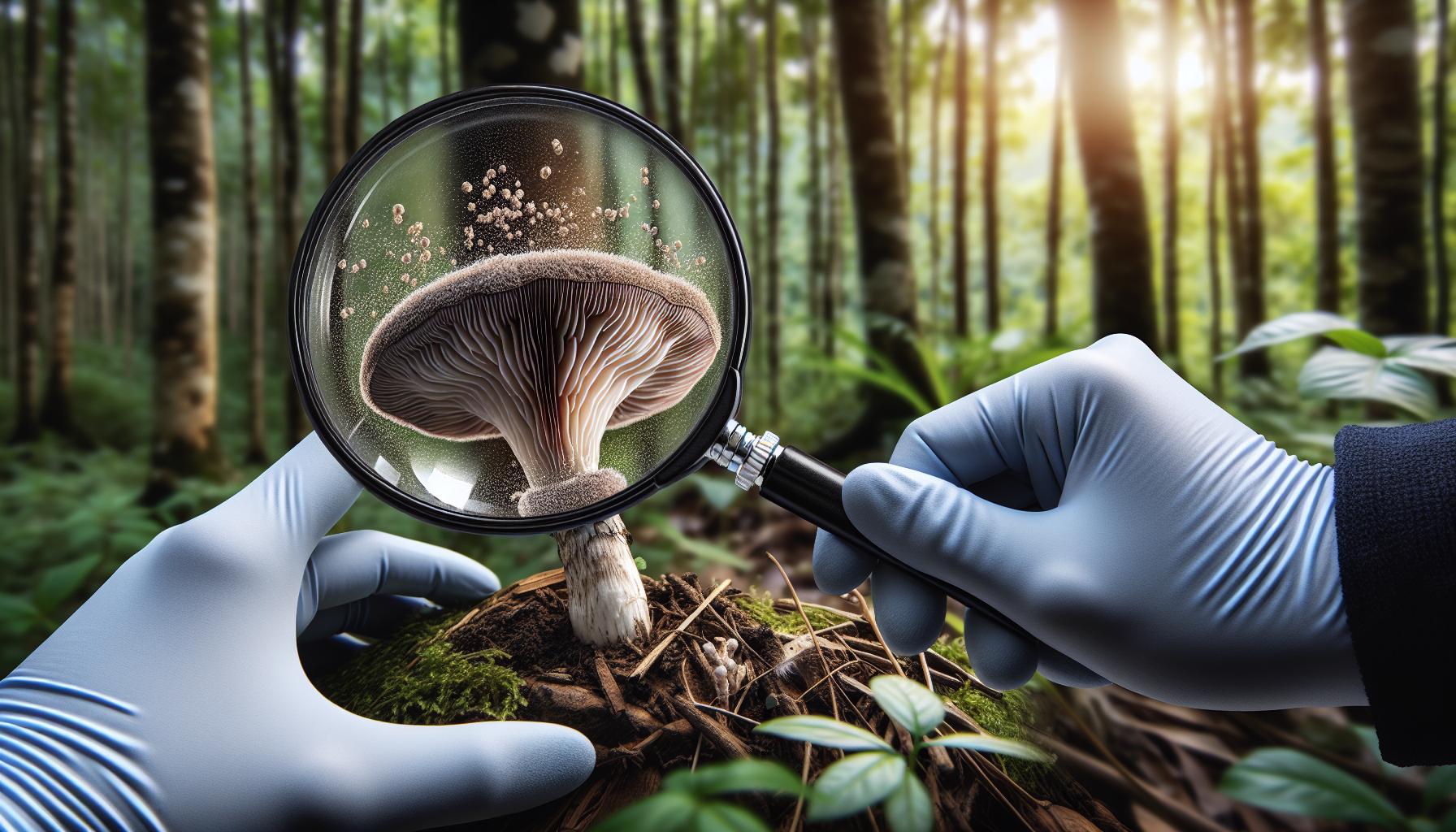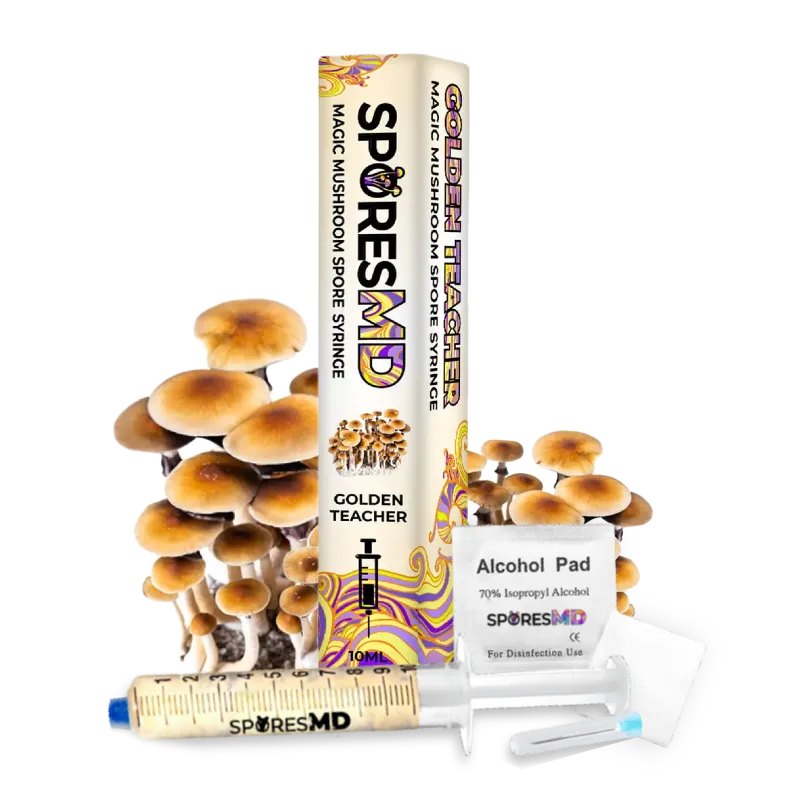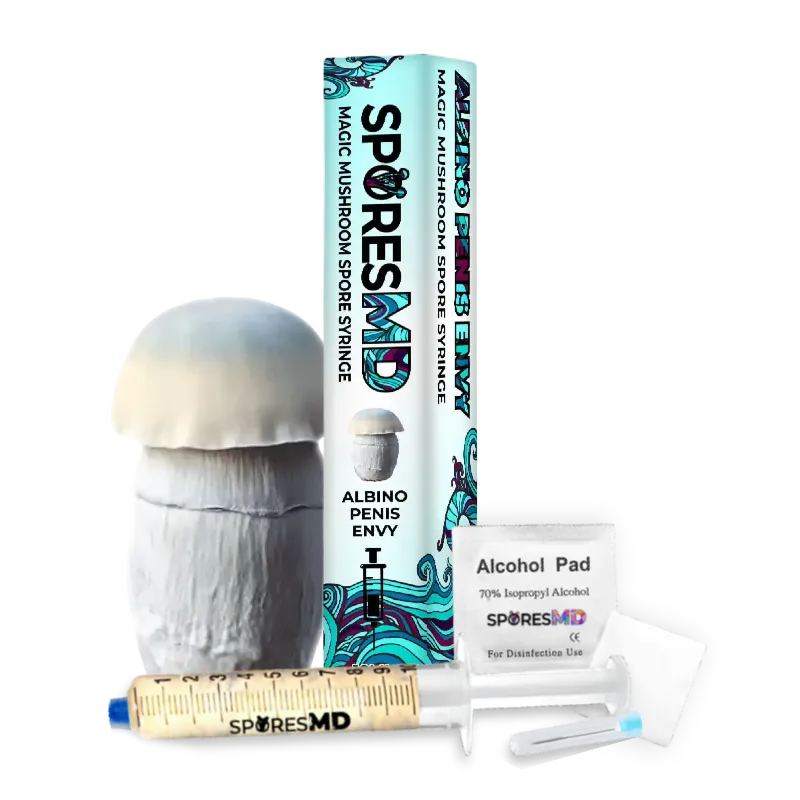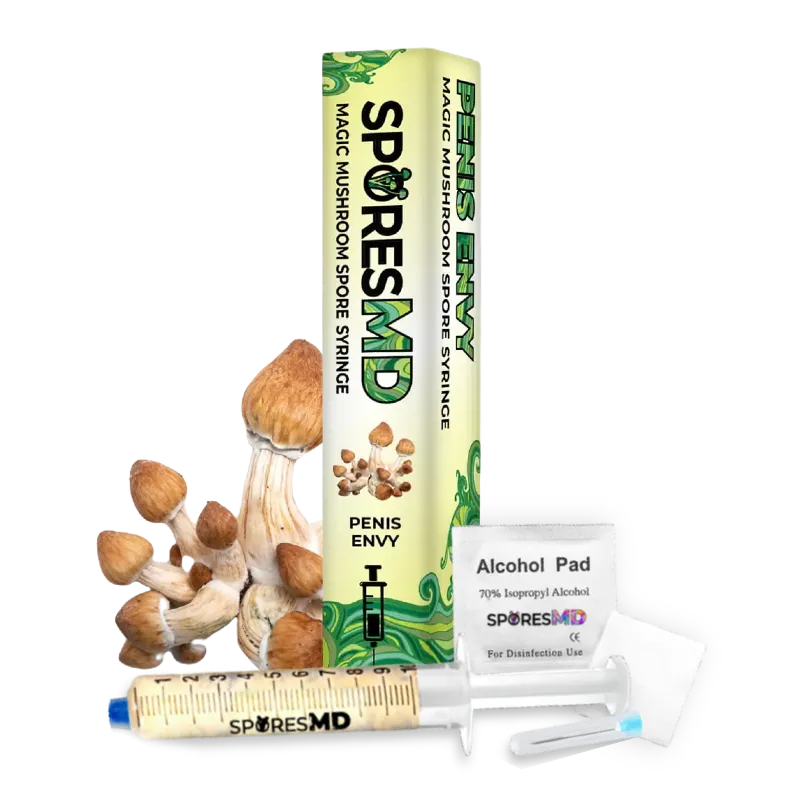Mushrooms have spores. These spores come in many colors. White, pink, brown, and black are common. Some are orange, yellow, or green. To see them, you need a lot in one place.
You can find spores on the gills of mushrooms. Sometimes, you’ll spot natural deposits on the mushroom or its surroundings. Other times, you need to make a spore print. Leave the mushroom on paper overnight. In the morning, you’ll see the spores.
Knowing the spore color helps identify mushrooms. It’s crucial if you pick mushrooms for more than just cooking. Plus, it’s an easy science project you can do at home.
If you’re looking to buy and own mushroom spore syringes, head on over to our shop!
Key Takeaways
- Understanding Spores: Spores are microscopic reproductive units produced by fungi, essential for their propagation and survival, and come in various colors such as white, pink, brown, black, orange, yellow, and green.
- Visual Indicators and Spore Prints: To determine spore presence in mushrooms, examine the gills or create a spore print by placing the cap on paper overnight. This helps identify mushroom species based on spore color.
- Environmental Influences: Environmental conditions like moisture and substrate significantly affect spore production and visibility. Observing the natural habitat can provide insights into spore dispersal patterns.
- Techniques for Confirmation: Making spore prints and using microscopy are effective techniques to confirm the presence of spores. Microscopy allows for detailed observation and accurate identification by examining spore dimensions and features.
- Safety and Legal Considerations: Utilize safety measures such as wearing gloves and consulting field guides. Be mindful of local regulations regarding mushroom collection, especially on public and private lands.
Understanding Mushroom Spores
What Are Spores?
Spores are microscopic reproductive units fungi produce to propagate their species. Each spore carries genetic material essential for fungal reproduction and survival. Spores come in a variety of colors like white, pink, brown, black, orange, yellow, and green. Although a single spore can’t be seen by the naked eye, spores in mass reveal distinct colors aiding in mushroom identification.
Why Do Mushrooms Produce Spores?
Mushrooms produce spores primarily for reproduction. Fungi grow mushrooms to create and distribute these spores, ensuring their lifecycle continues. Spores facilitate the dissemination of the species across diverse environments. This propagative strategy is vital for survival, adaptation, and evolution.
- Spores are reproductive units.
- Color variants: white, pink, brown, black, orange, yellow, green.
- Spores ensure fungal propagation.
Identifying Spore Presence in Mushrooms
Visual Indicators of Spores
To determine if a mushroom has spores, examine the top of its stipe. Spore dust often accumulates on the nearby forest floor. Observing this can give you immediate clues about their color and presence.
Creating a spore print offers another method. Place the mushroom cap gill-side down on a piece of paper. Cover it with a cup to prevent spores from blowing away. Leave it for several hours, then check for a deposit on the paper. Thick deposits are more visible and stable, whereas sparse deposits may need extra care to detect.
Adding a few drops of water to a dried mushroom may encourage sporulation, though it’s not always effective. Visible changes, like colored shreds on the mushroom cap or veil remnants, indicate spore release. For example, in Cortinarius mushrooms, brown spores color the partial veil.
The Role of Natural Environment
Environmental conditions significantly impact spore production and visibility. Mushrooms on the forest floor often release spores that blend into their surroundings. These deposits can be subtle, requiring close observation to detect.
Different species may have distinct behaviors. For instance, mushrooms like Lyophyllum exhibit specific spore dispersal patterns. Observing the natural setting helps in understanding these nuances. Ideal conditions for sporulation include adequate moisture and the appropriate substrate.
Remember, identifying spores enhances your mushroom identification skills. It’s essential for anyone keen on mycology or simply exploring nature.
Techniques for Confirming Spores
How to Make a Spore Print
Spore prints help determine if a mushroom has spores. Place the cap, gills or pores down, on a half-white, half-dark paper or clear stiff plastic. Cover it with a jar to retain moisture. Leave it overnight. When you remove the cap, you’ll see the spores.
Different mushrooms deposit spores of varied colors. For example, mushrooms in the genus Lactarius can produce white to yellow prints based on deposit thickness. Consult guides like those from SporesMD for detailed steps on creating accurate spore prints.
Using Microscopy to Observe Spores
Microscopy is another method to confirm spores. Acquire a compound microscope with at least 400x magnification. Collect a small sample of spores on a slide, cover it with a slip, and magnify.
Use the coarse knob to focus, then fine-tune the image. Measure spore dimensions using a calibrated eyepiece. Photographs create a visual record for future analysis. This technique allows you to observe distinct features, crucial for accurate identification. Check SporesMD for tools and spores for your microscopy needs.
Practical Considerations
Safety Tips When Handling Wild Mushrooms
Identifying mushrooms involves risks. Avoid consumption unless fully certain of their safety. Misidentification can lead to serious poisoning or allergic reactions.
Safety Principles:
- Wear Gloves: Prevent direct contact with unknown species.
- Use Field Guides: Consult reliable sources for identification.
- Conduct Spore Prints: Lay caps on paper to check spore coloration.
- Dispose Carefully: Discard questionable species in sealed bags.
Use these principles to minimize risk, especially when collecting spores.
Legal Aspects of Collecting Mushroom Spores
Laws on mushroom collection vary. Always check local regulations. Some regions protect certain fungi species or restrict collection volumes.
- Public Lands: Verify permits for collecting on government property.
- Private Lands: Obtain landowner consent.
- Protected Species: Avoid harvesting endangered mushrooms.
These guidelines ensure compliance and conservation. For more legal information, visit SporesMD. Enhance your collection tools with SporesMD’s mushroom spore syringes.
Conclusion
Understanding mushroom spores is crucial for both scientific exploration and safe foraging. By using techniques like spore prints and microscopy, you can accurately identify different mushroom species. Always prioritize safety by wearing gloves and using reliable field guides. Remember to follow local regulations and obtain necessary permits when collecting spores. For detailed guidance and legal information, SporesMD offers excellent resources. Stay informed and enjoy your mushroom foraging adventures responsibly.





